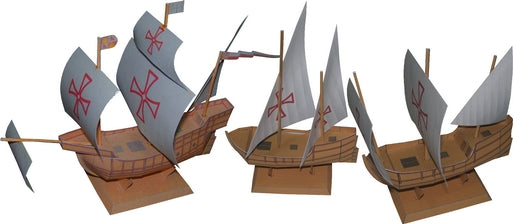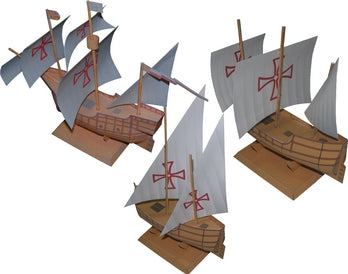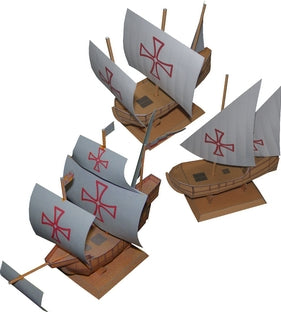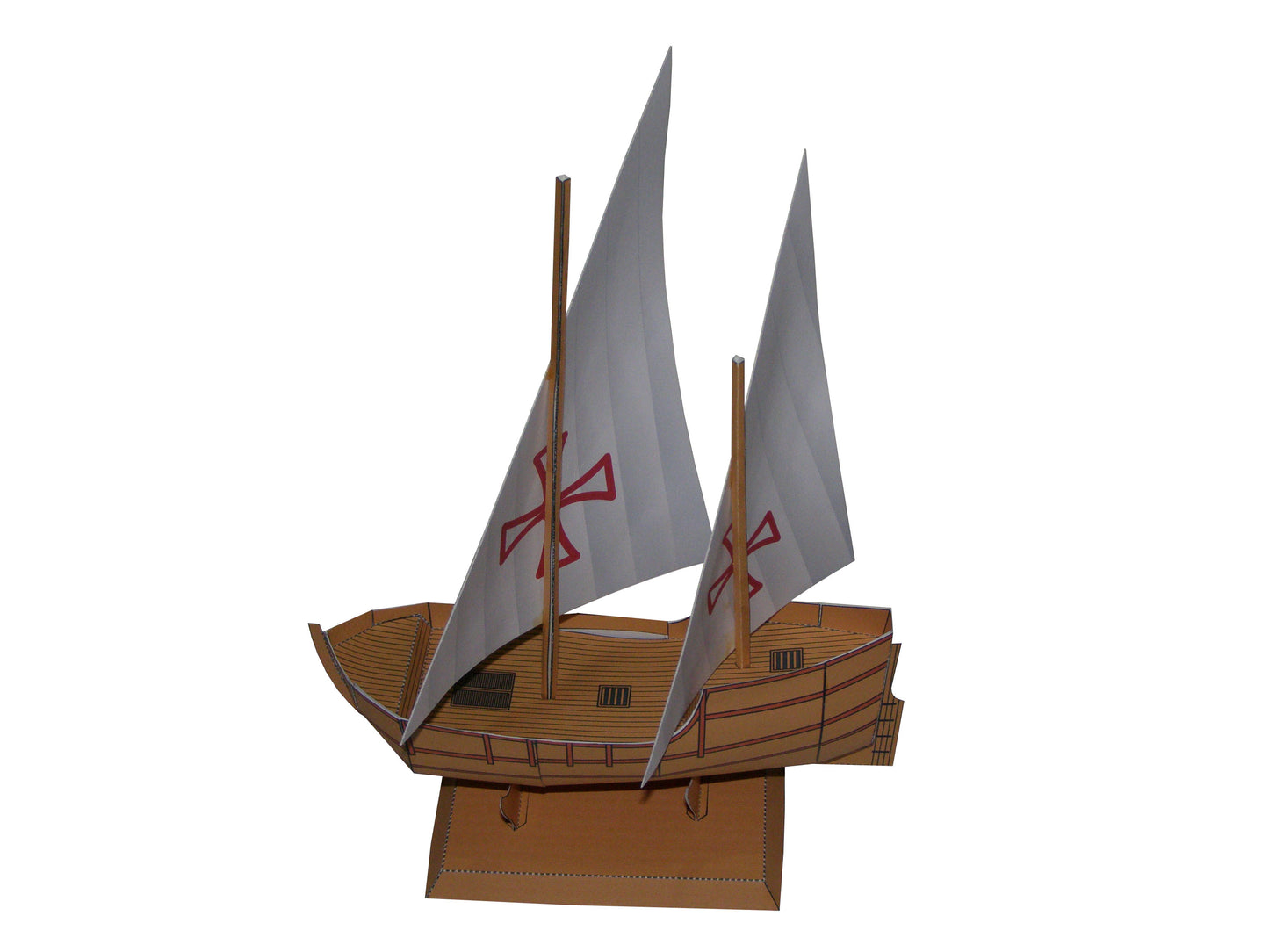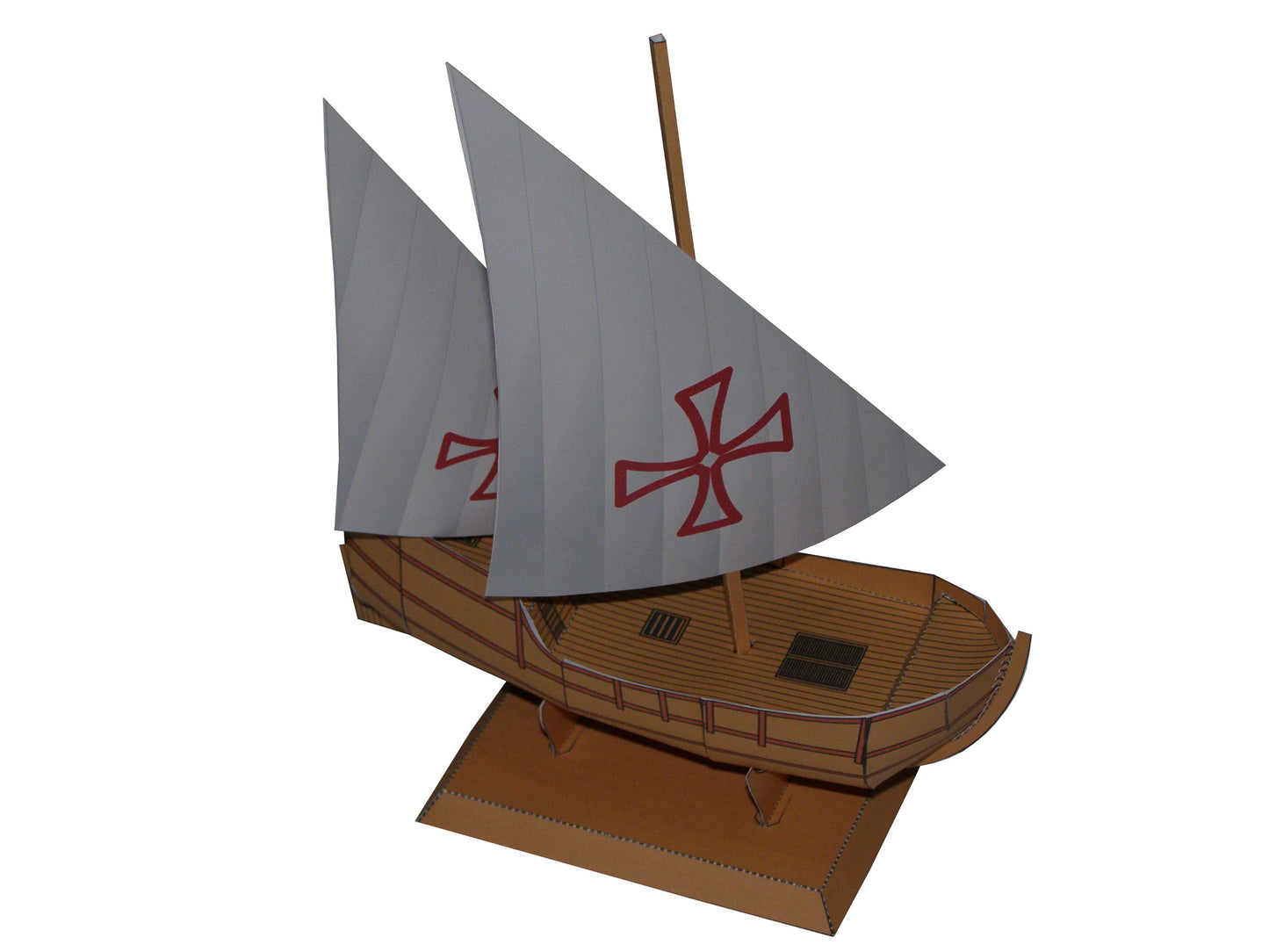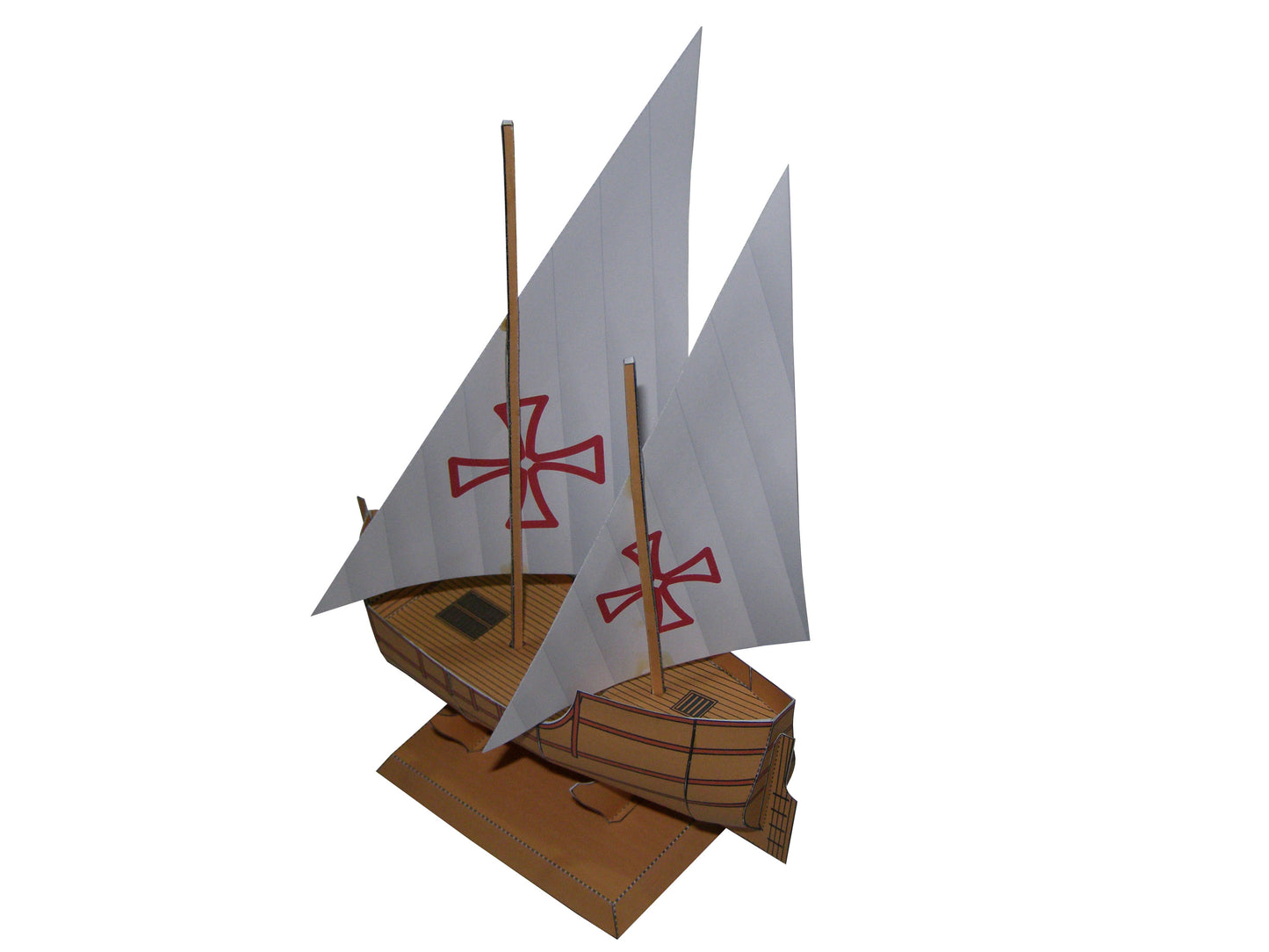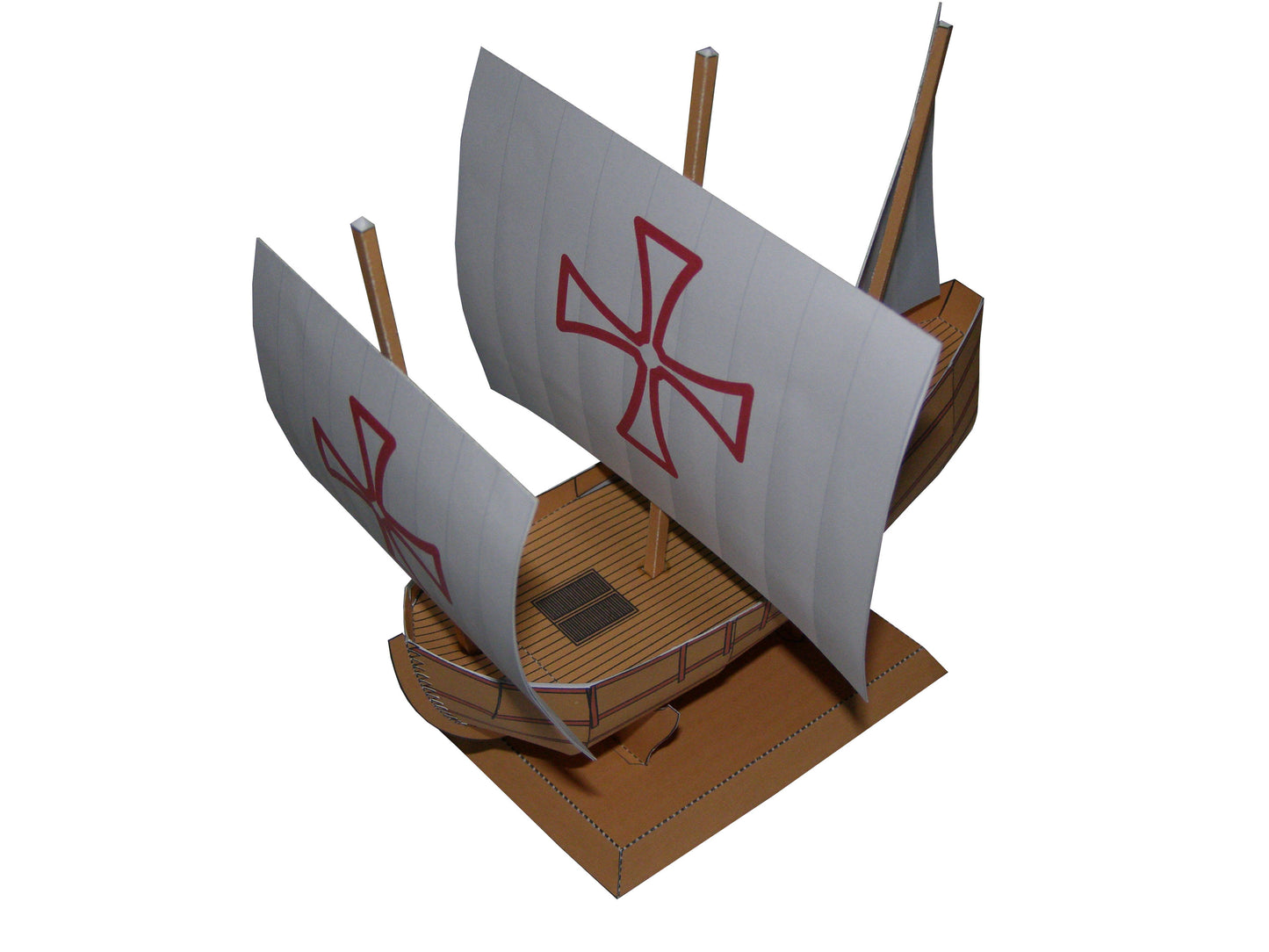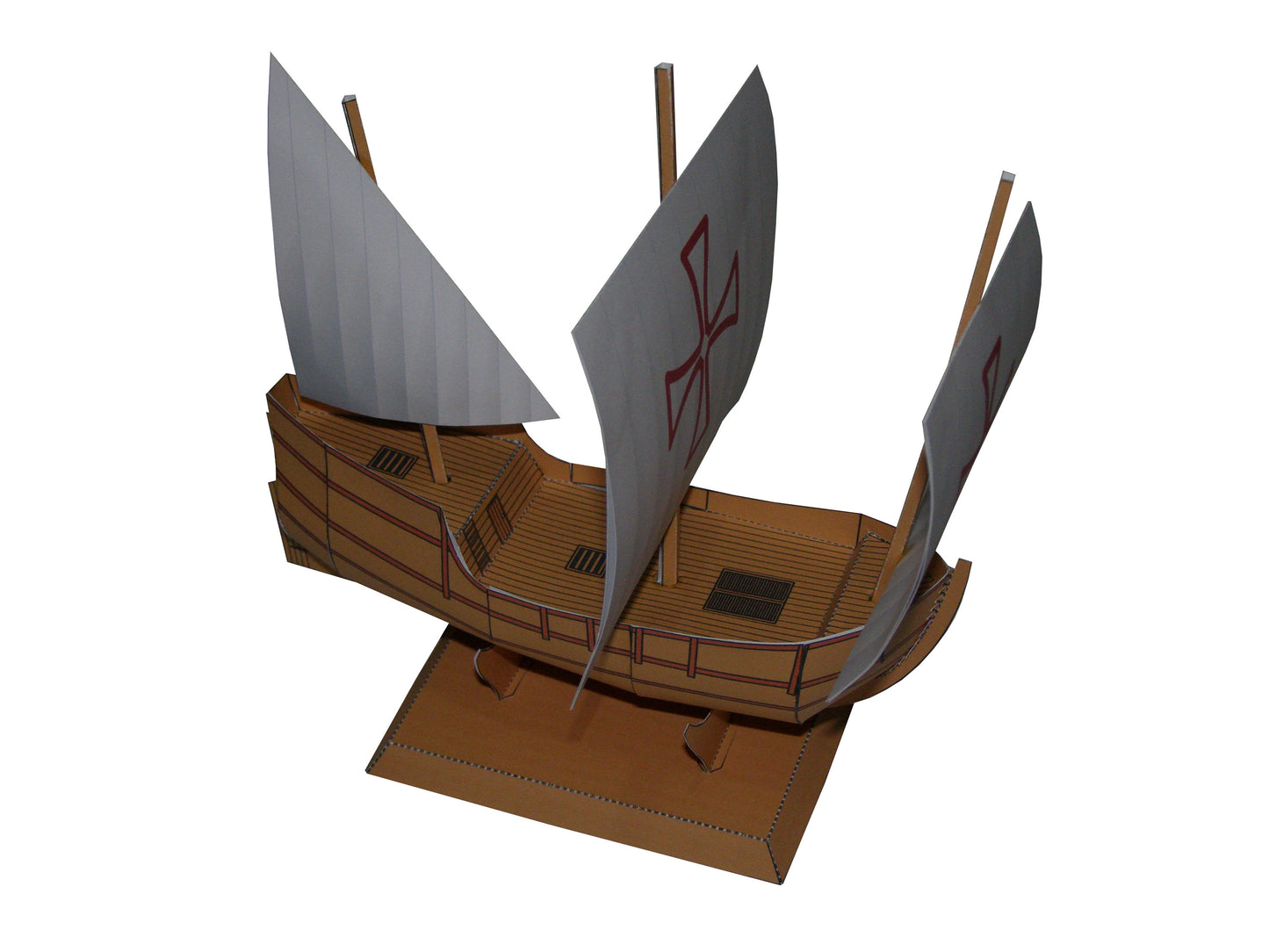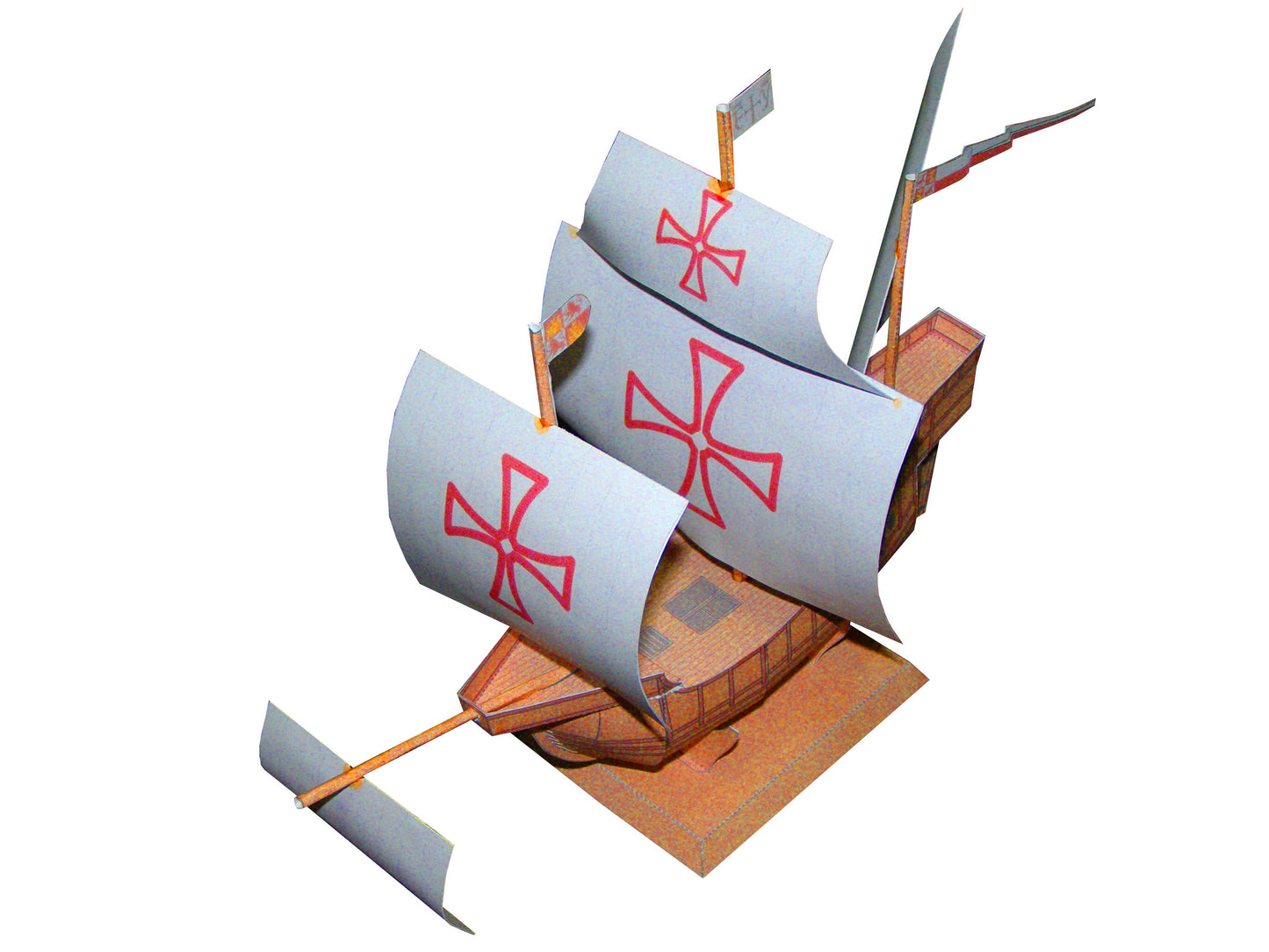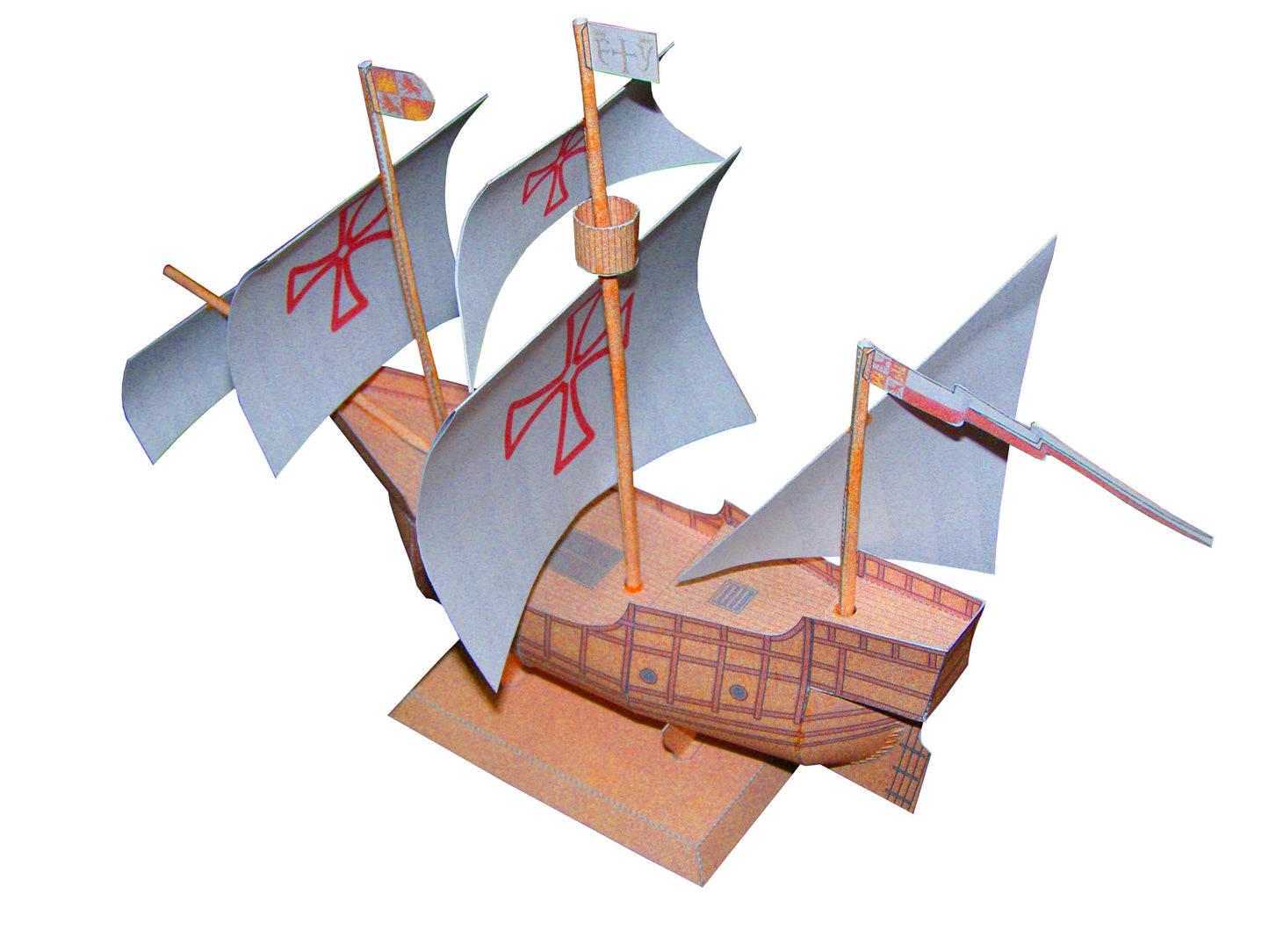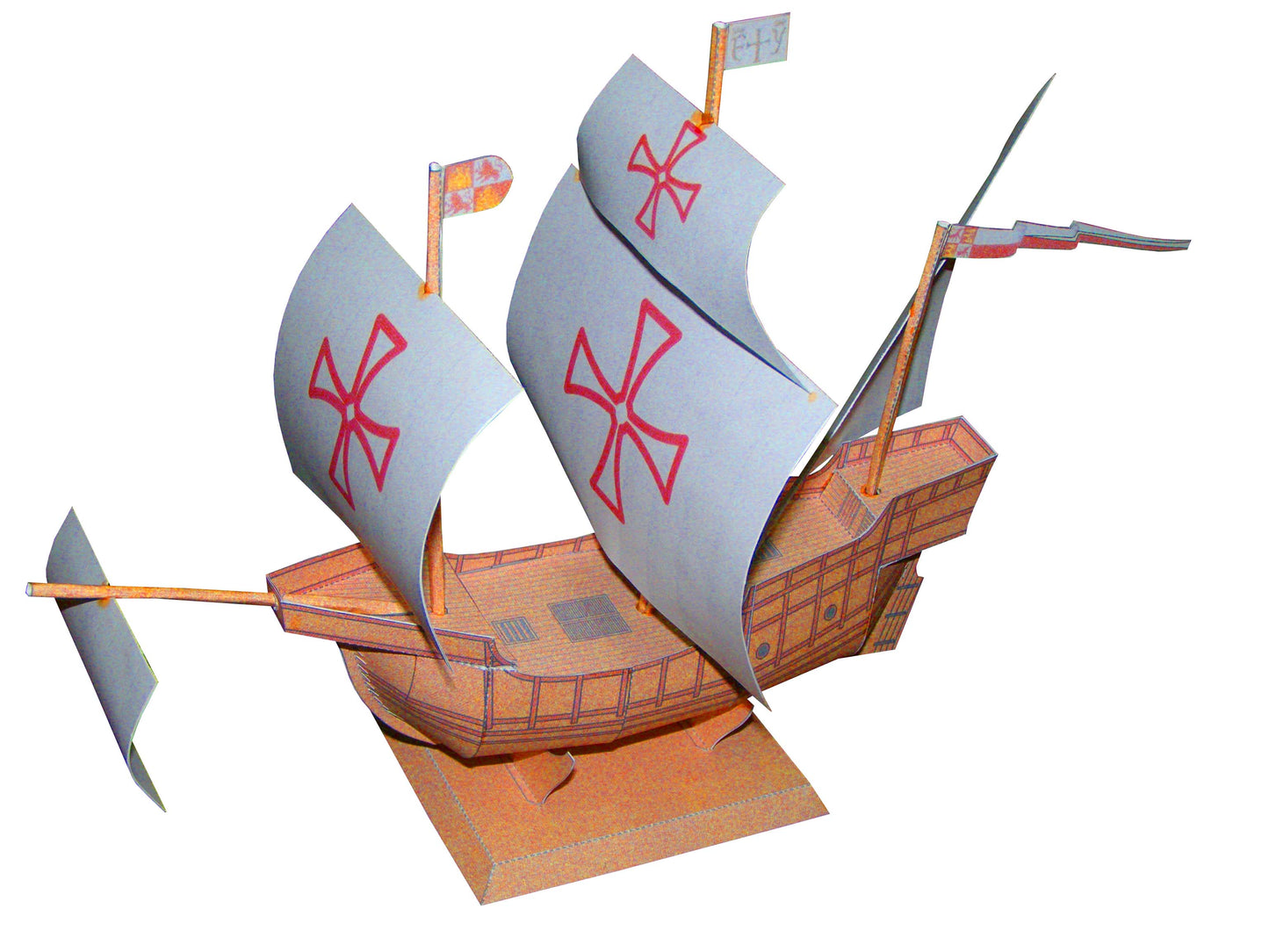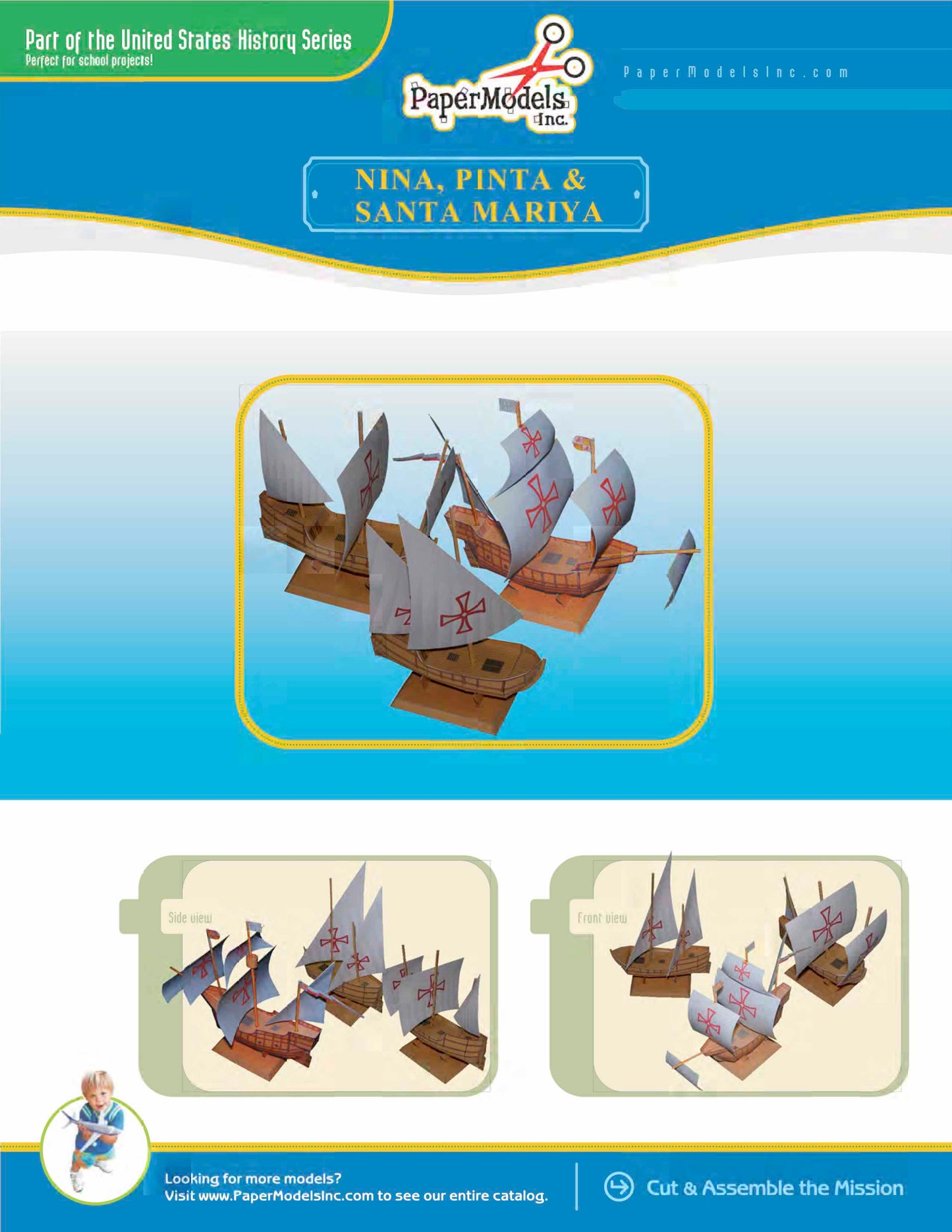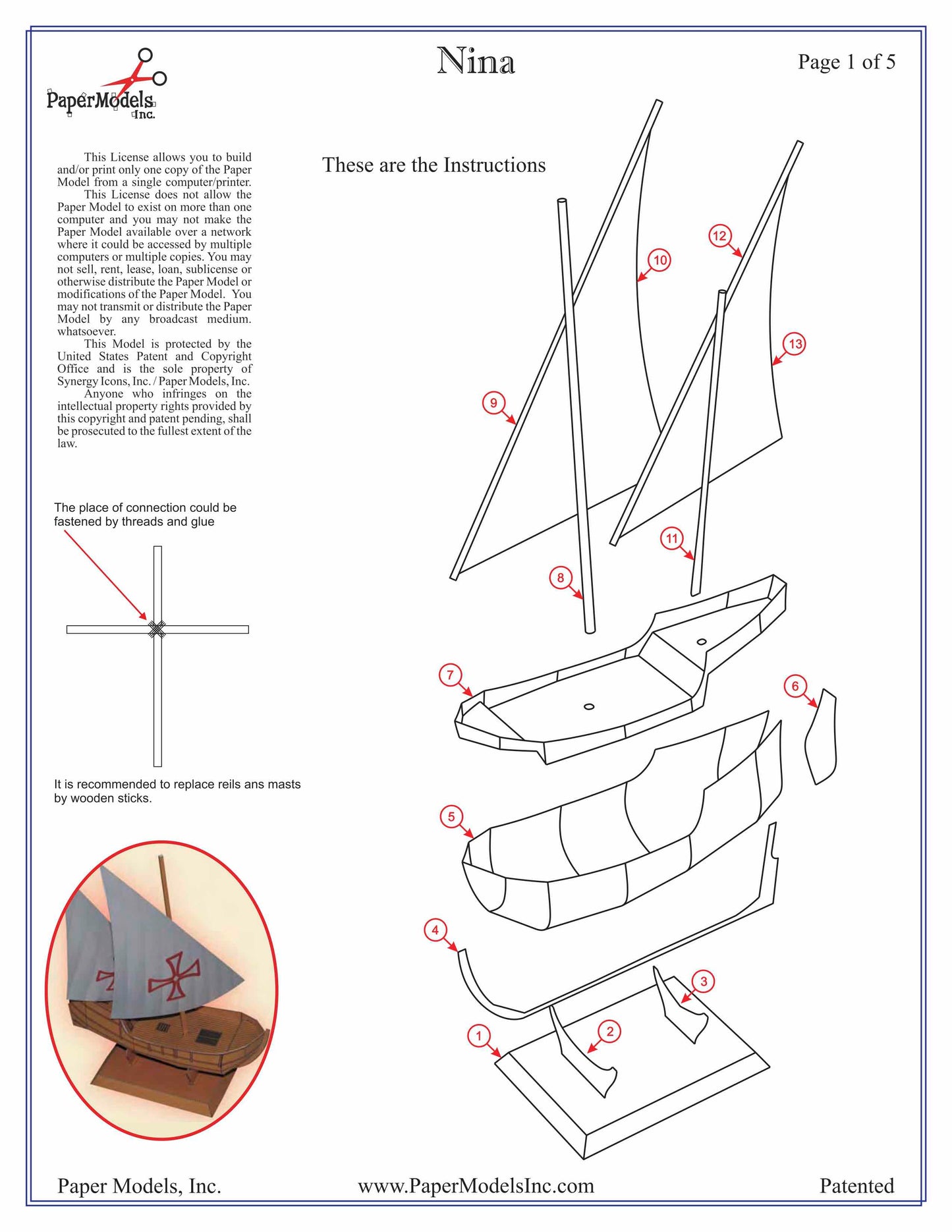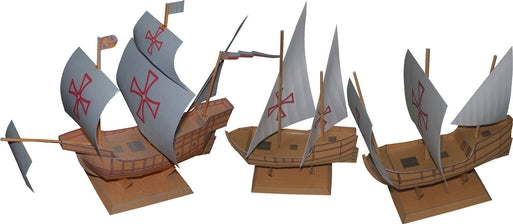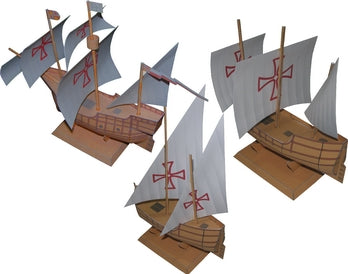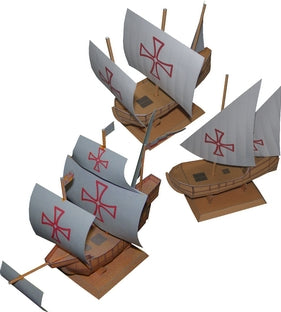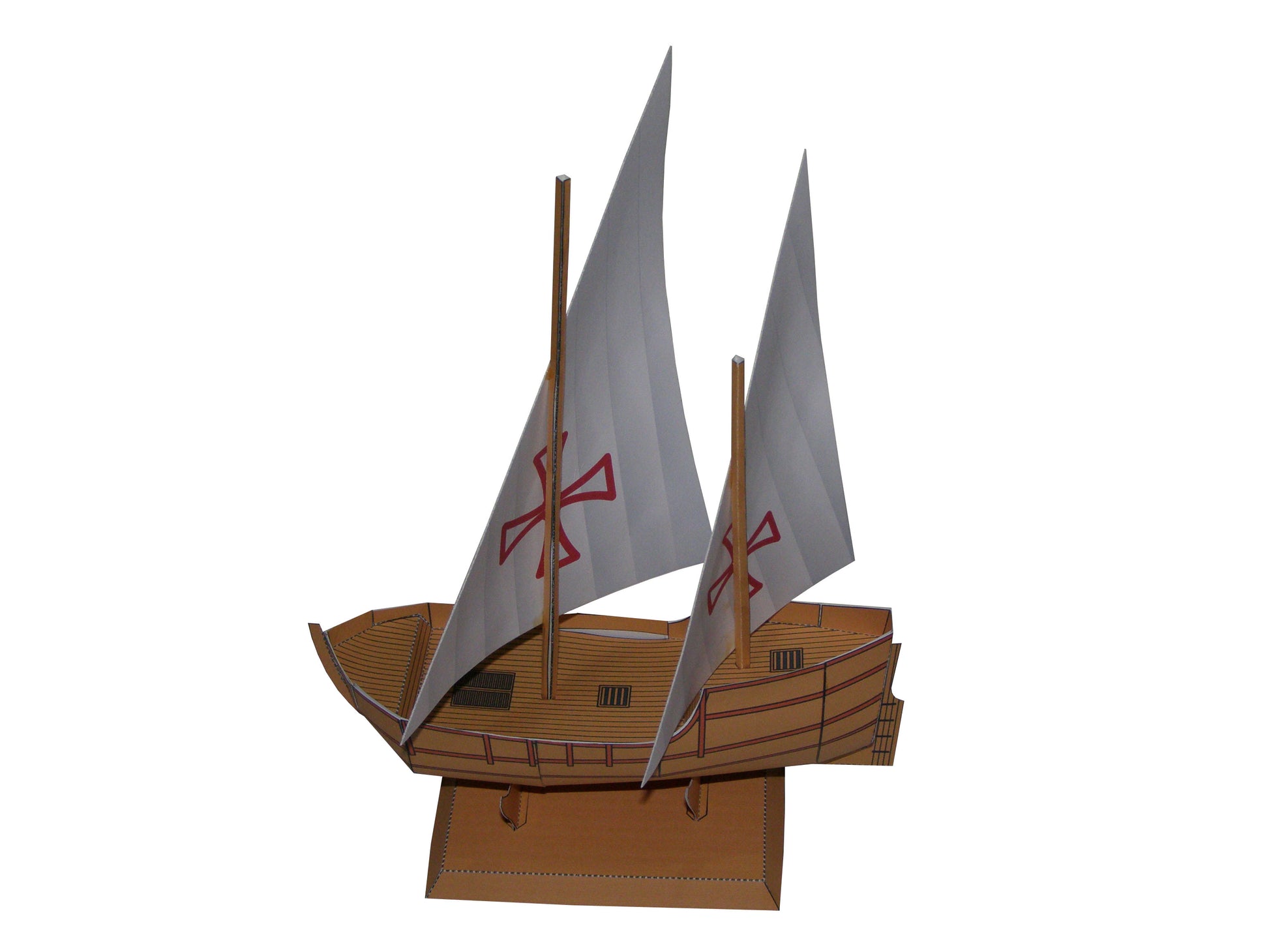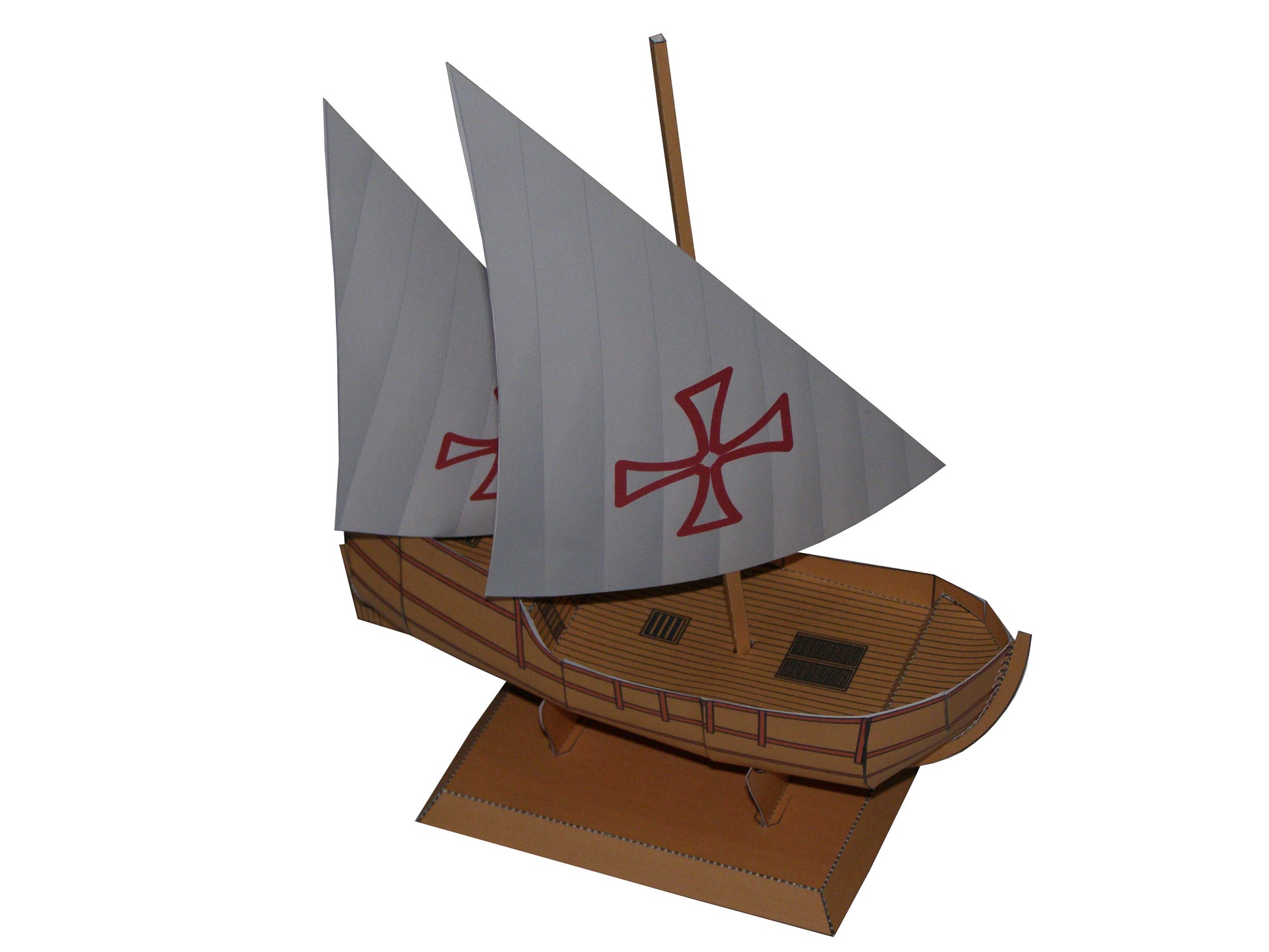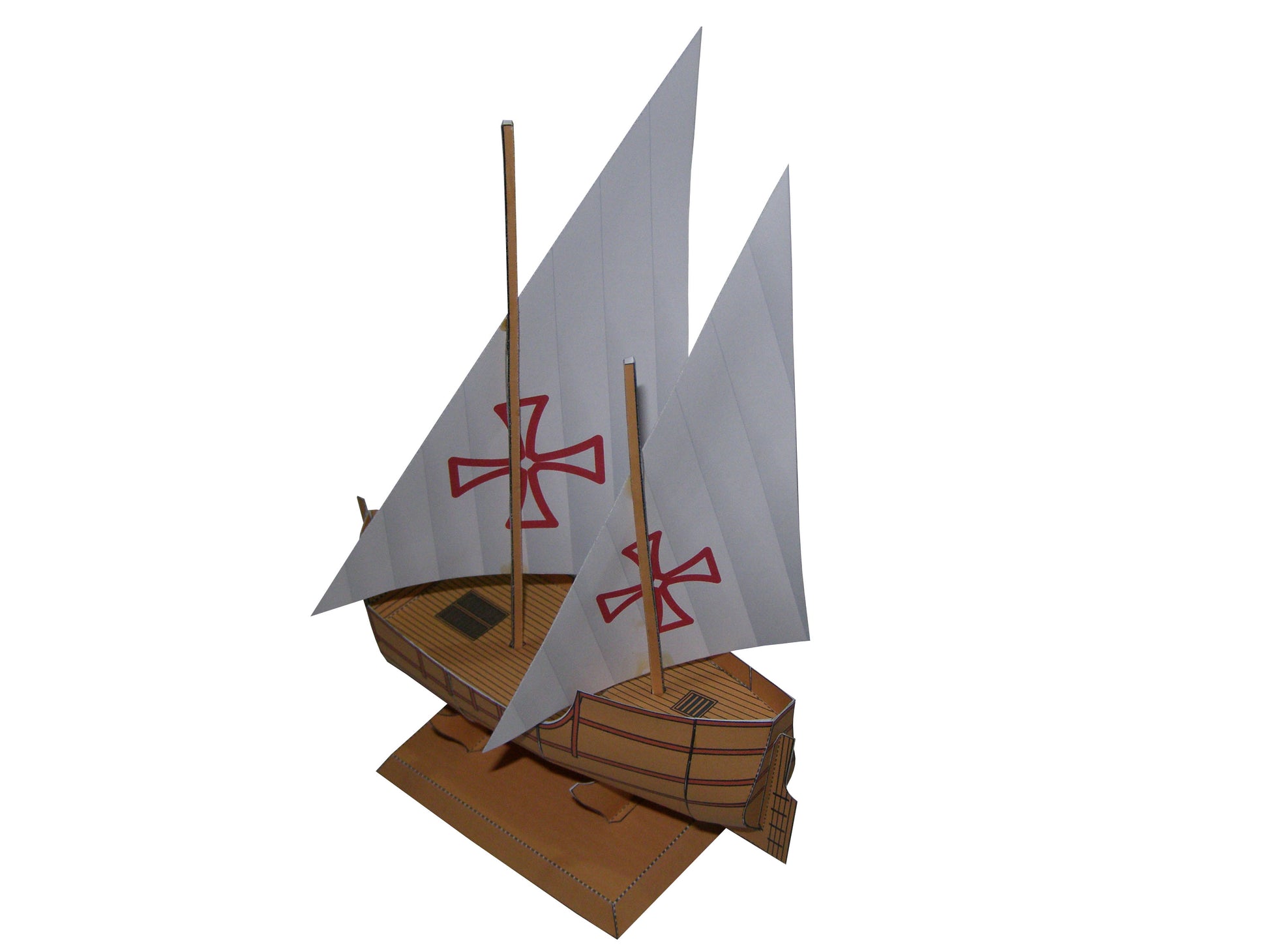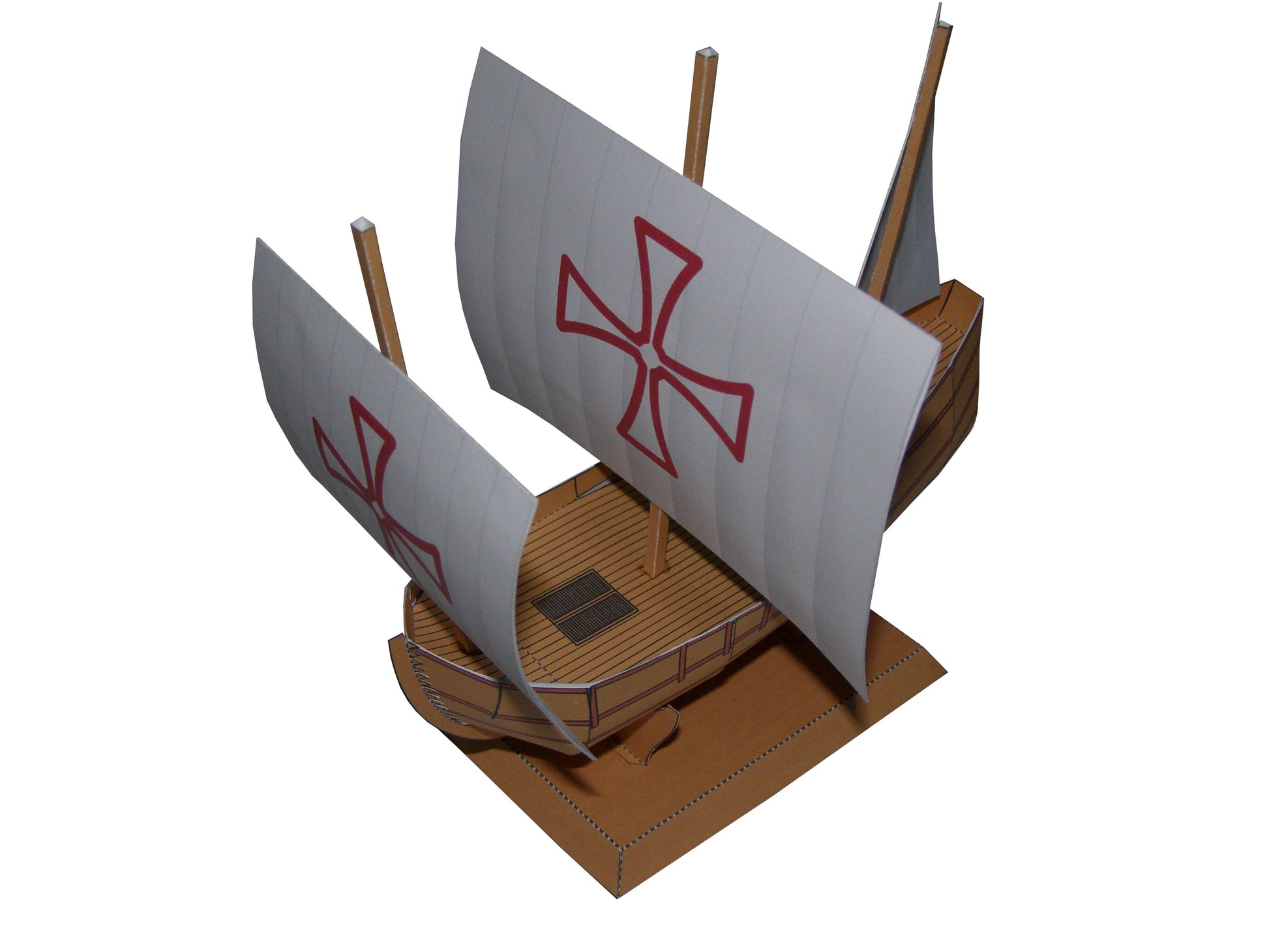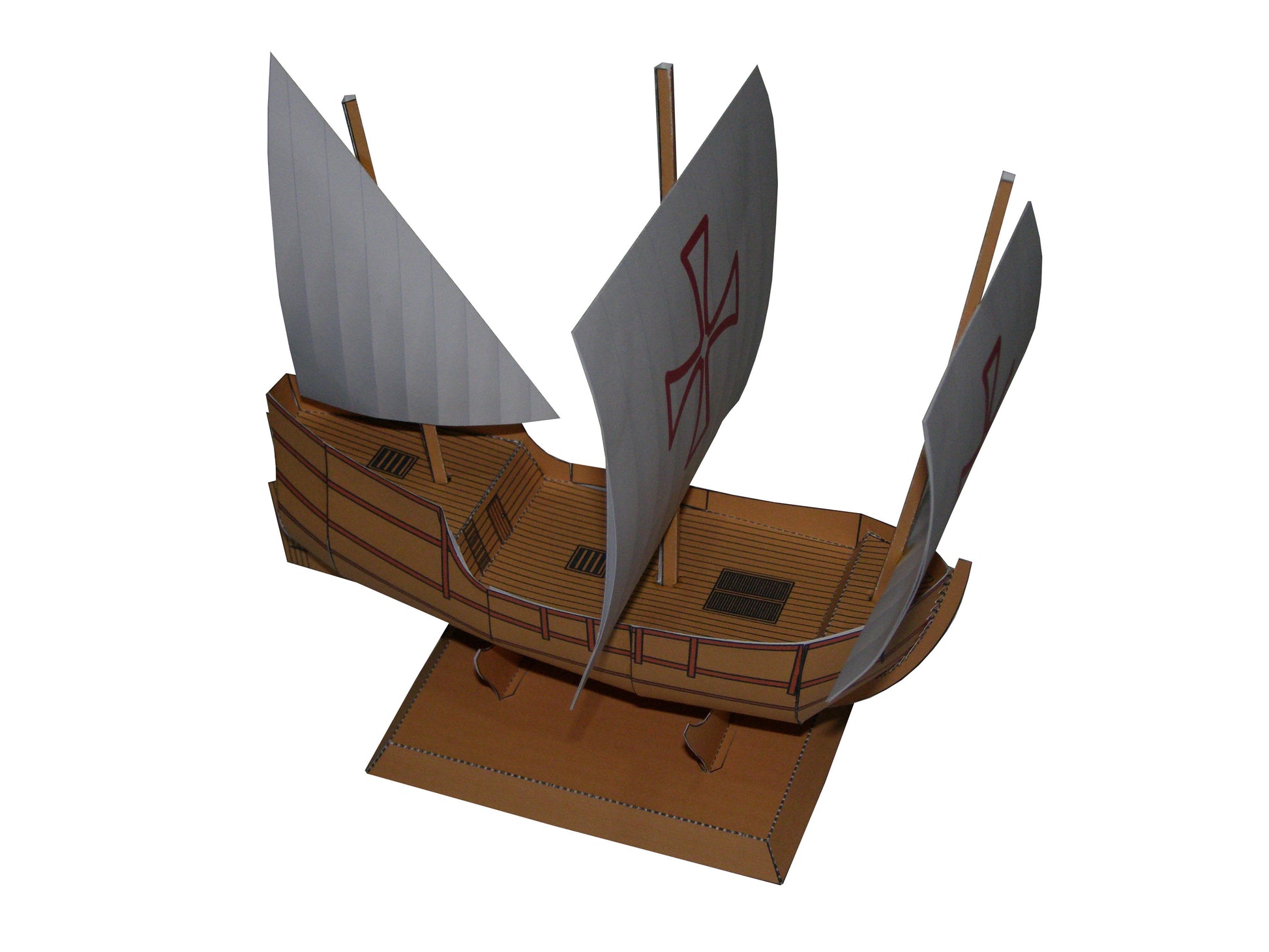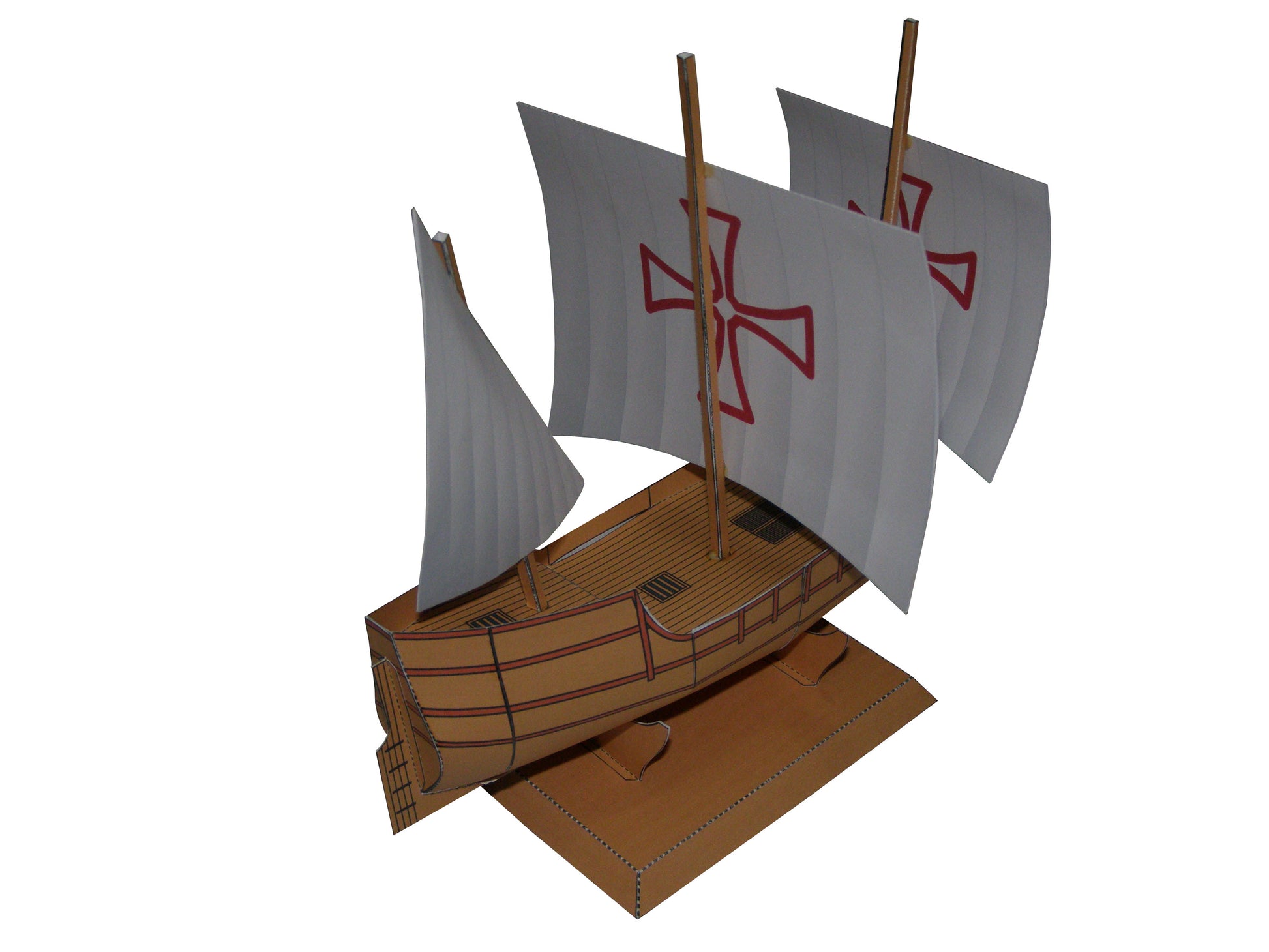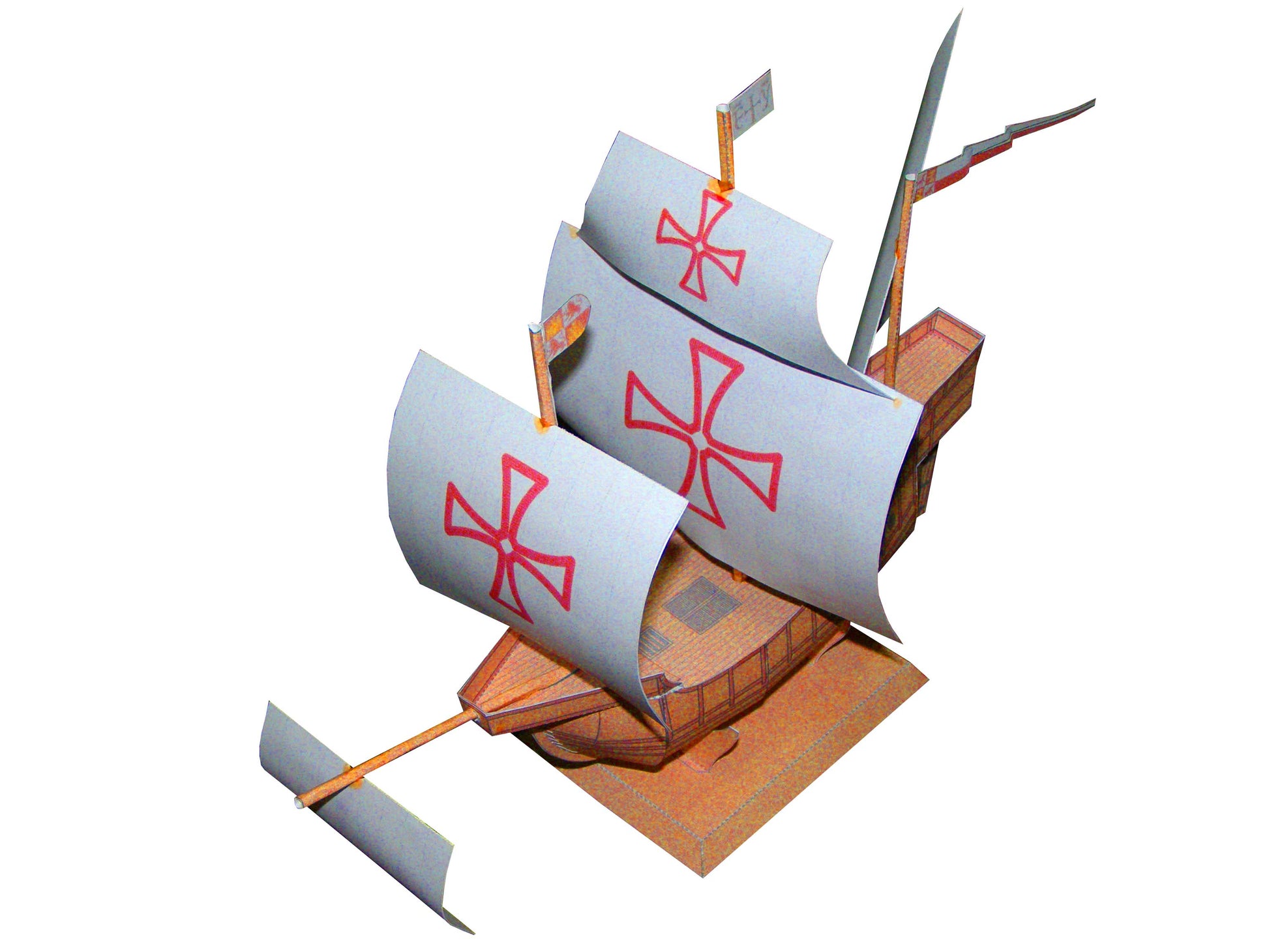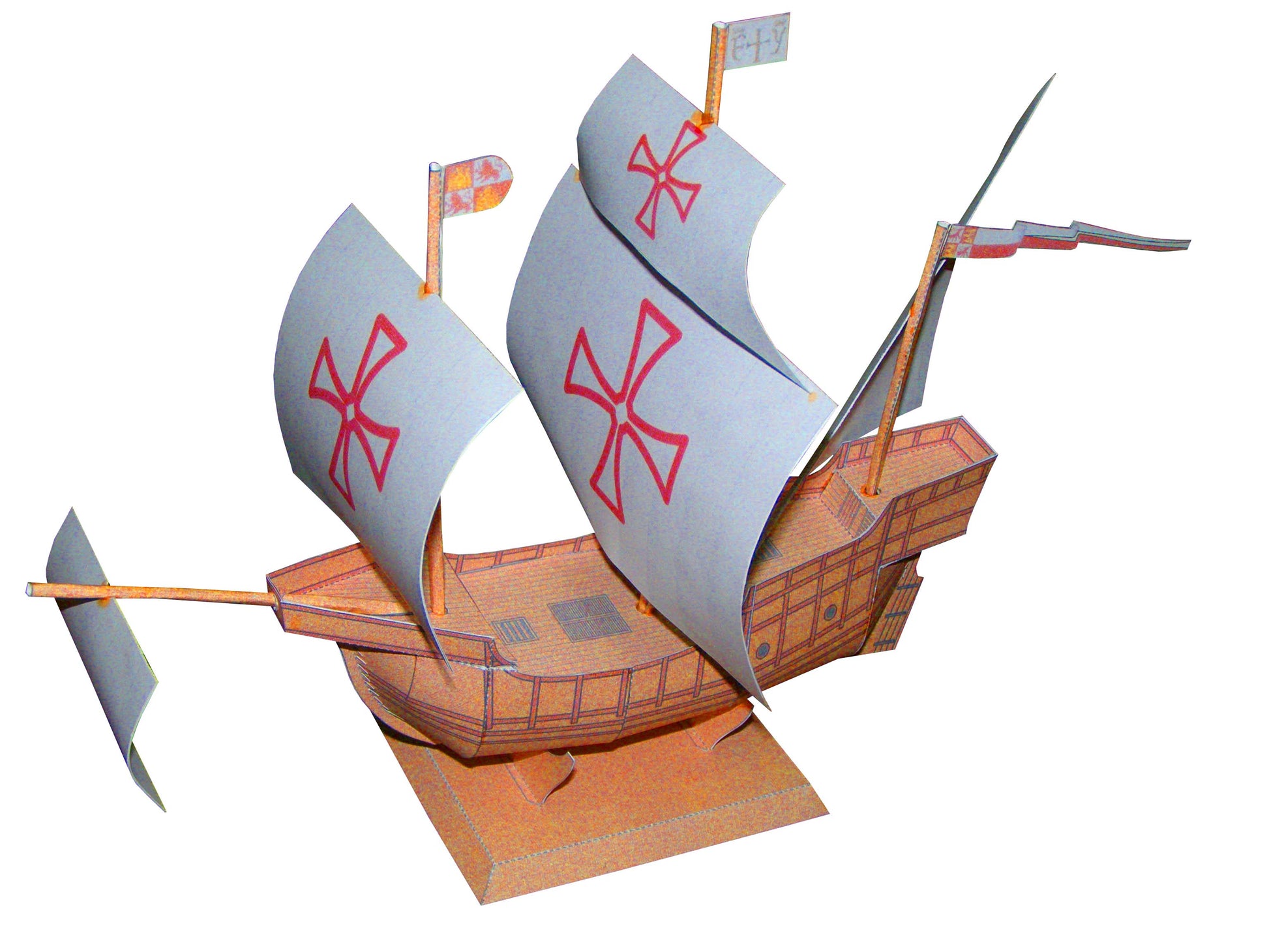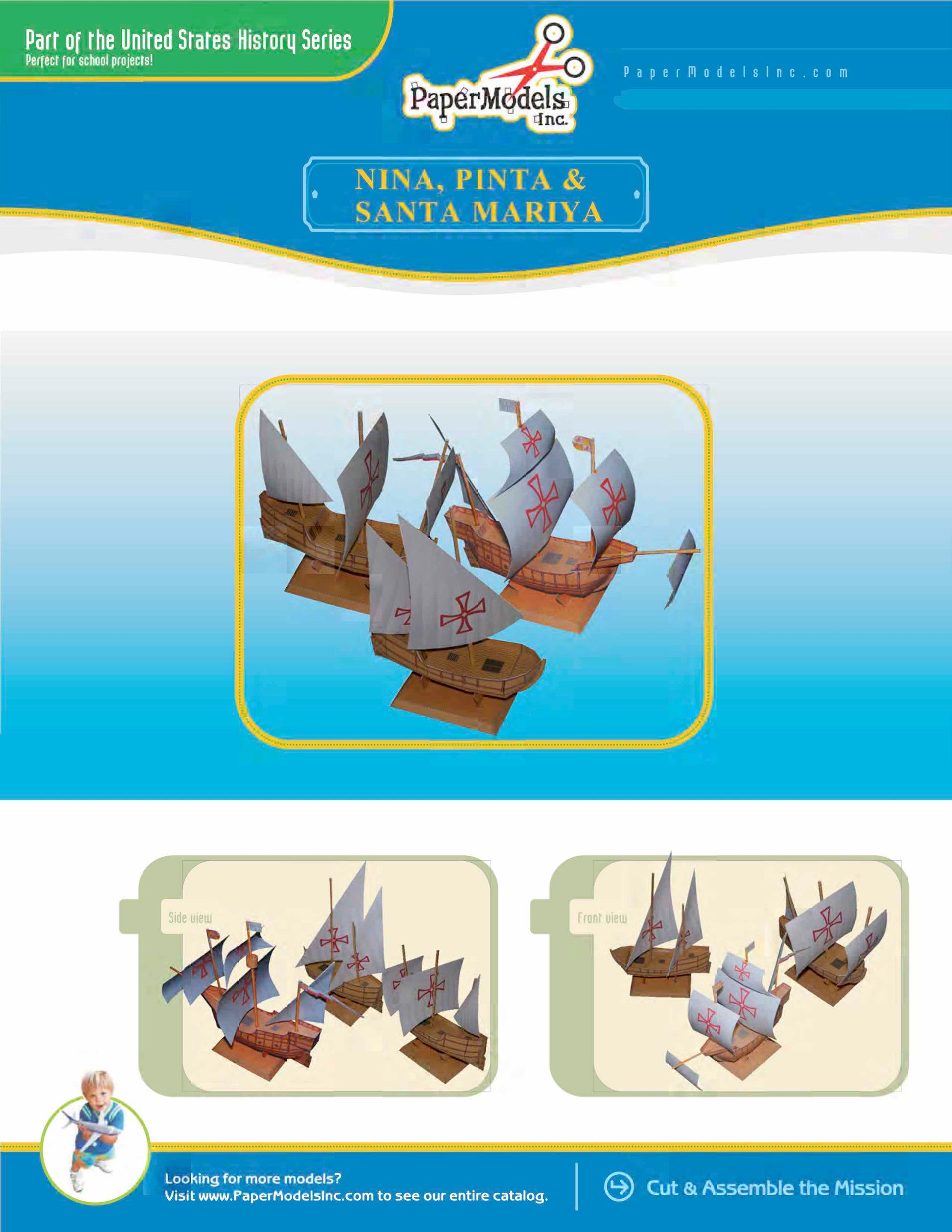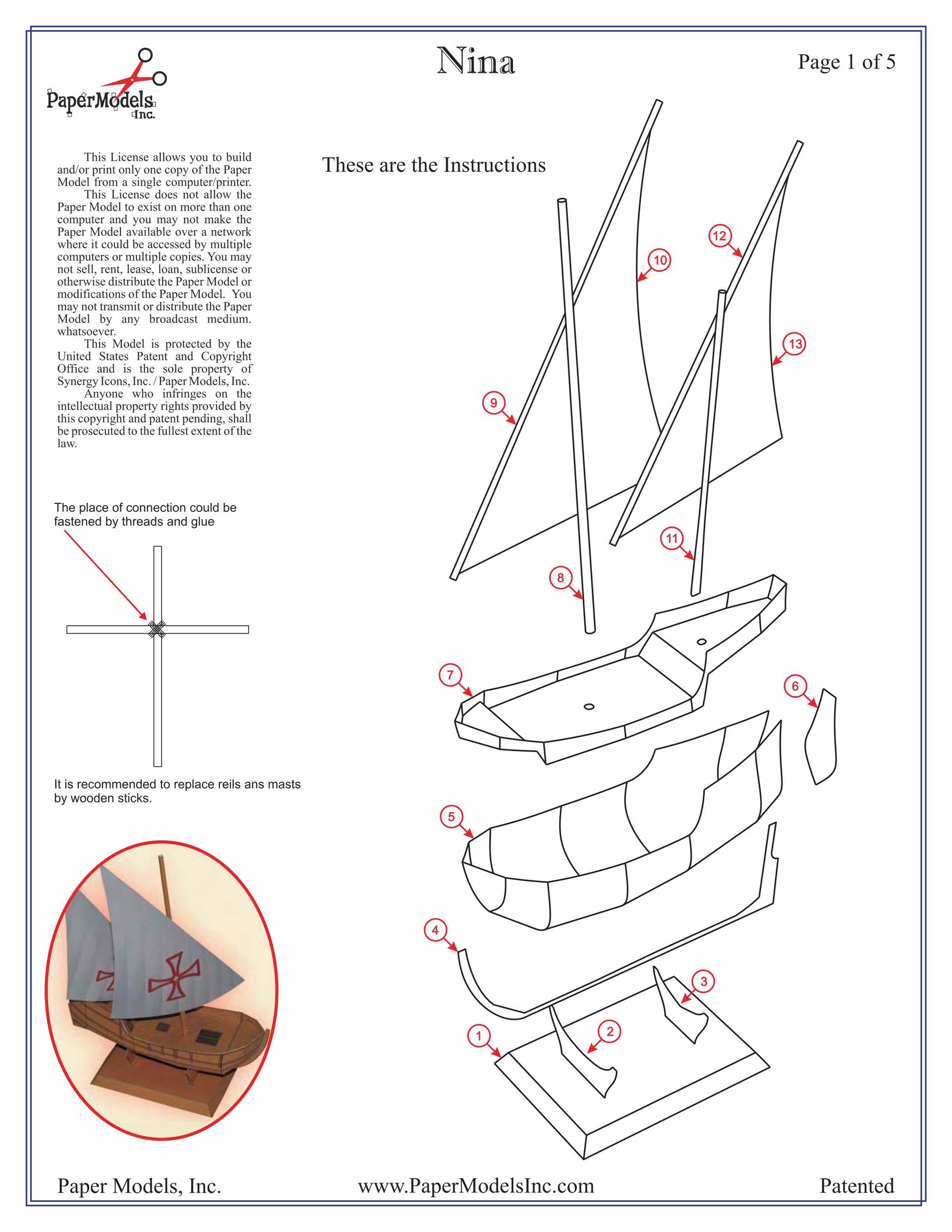Christopher Columbus, Nina Pinta, Santa Maria - Paper Model Project Kit
Christopher Columbus, Nina Pinta, Santa Maria - Paper Model Project Kit
No se pudo cargar la disponibilidad de retiro
🌟 Welcome to Paper Models Online – Your Shortcut to Academic Excellence! 🌟
Are you tired of stressing over last-minute school projects? Look no further! Paper Models Online is here to make your academic life a breeze.
🚀 Why Choose Us?
At Paper Models Online, we understand the pressure of looming deadlines and the desire for that coveted "A" grade. That's why we've crafted the perfect solution for you! Whether you're a student aiming for extra credit, a parent looking for quality time with your kids, or just someone in need of a break from the chaos, our paper models are your ticket to success!
💻 Instant PDF Download OR Pre-Printed & Shipped
You're in control! Choose from our instant PDF download, starting at just $9.95 for the 7"x10" size or $11.95 for the 10"x13" size.
Print it on your home or office printer using regular paper, or opt for the hassle-free pre-printed option. We'll ship it directly to your doorstep for a flat $5 fee via USPS First-Class Parcel, ensuring you get it in 1-3 days!
✂️ Easy Assembly, Maximum Impact
With just a pair of scissors, some glue, and an hour of your time, you can turn these paper sheets into stunning three-dimensional architectural replicas or complete science projects. The images on our website are real models made from our kits, and we even provide a history to help you craft an impressive report.
🎨 Unleash Your Creativity
Not into mission kits? No worries! Our models double as templates for your creative genius. Paint, trace, adjust sizes—your imagination is the only limit! Create a custom masterpiece that reflects your unique style and personality.
🛒 The Buying Process Made Simple
- Choose Your Size: 7"x10" or 10"x13"
- Choose Your Delivery: Instant PDF download or pre-printed and shipped
- Purchase Your Model: It's that easy!

📦 Typical Kit Sample
Each kit includes 8 to 18 pages, providing everything you need to bring the model to life. An "exploded view" guides you through assembly, and a complimentary history adds that extra touch for your report. Impress your teacher not just with creativity but also with your research skills!
Don't let deadlines stress you out. Choose Paper Models Online for your next school project, and let us be Your Best Way To Get An "A"! 🌟
 |
 |
 |
| Exploded View | Sample Pieces | Finished Model |
Free History For Your Report
Ships of Christopher Columbus
Christopher Columbus was one of the world’s most important explorers of unknown lands and exotic locales. Born in the independent Ligurian state of The Most Serene Republic of Genoa in 1451, Columbus became one of the Old World’s chief explorers under the leadership and financial assistance of Spain’s Queen Isabella. Contrary to many popular beliefs, Columbus was not the first European explorer to discover the Americas, but rather he was the first European to begin regular contact with the indigenous people of the Americas and advance the idea of Spanish (and then European settlement) of the new world. Christopher Columbus made a total of four voyages from Spain to the New World during a time frame that spanned from August 3rd, 1492 – November 7th, 1504.
The first landing in the New World came on October 12th, 1492 on an island in the Bahamas (believed to be the modern-day islands of either San Salvador or Plana Cays), which was followed by a friendly encounter with the native peoples. Columbus (in his journal entries) viewed these natives as ill-prepared for warfare, potentially good servants, and easy converts to Christianity. Before departing back across the Atlantic, Columbus and his crew also visited Cuba and Hispaniola, an island in the Antilles. Of the locales visited by Columbus in this New World, Hispaniola witnessed the greatest impact. Upon the Santa Maria accidentally running aground on December 25, 1492, Columbus chose to establish the Spanish settlement of La Navidad on the island to keep an eye on the valuable contents of the ship, in what is now present-day Haiti. A number of the local populous was also forcibly kidnapped by Columbus’ crew in order to be brought back for show and examination in Spain. While it is unclear how many natives were kidnapped, it is well- documented that only seven survived the intense voyage. The trip home was delayed over a week due to a storm in the Spanish harbor, which required the remaining Pinta and Nina to dock in Portugal temporarily. Columbus and his crew safely arrived back in Spain on March 15, 1493.
Of the three ships to make this initial voyage, only the Santa Maria was constructed for the express purpose of exploration and was truly designed to survive the intense seas of an Atlantic crossing. Ironically, it is the only ship that did not make it back to Spain. With an occupancy of 40 men, the Santa Maria was a three-masted windjammer that was 70 feet in length. Upon her demise in present-day Haiti, the salvageable timber was utilized to build the La Navidad settlement. Up to three modern-day replicas of the Santa Maria have been constructed (one of them non-sailing) but all of these recreations are based on speculative information; no photograph of the ship exists, and drawings and journal entries by her owners and crew often contradict one another in describing the type of ship it was.
The second ship, the Nina, was a much smaller and more maneuverable vessel than the Santa Maria, and was known as a caravel-type ship. Carrying twenty-three men on the first voyage, she became Columbus’ main ship after the wrecking of the Santa Maria. The Nina’s biggest claim to fame was her designation as the flagship (out of a total charter of 17 ships) for an exploratory voyage to Cuba in 1495. This voyage didn’t go as planned as a massive hurricane killed hundreds of crew members and destroyed 16 ships in the charter; only the Nina survived. After venturing to Hispaniola for Columbus’ third voyage in 1498 she served as a trading ship in the New World. The last record of her was in 1501 in the Pearl Coast; she is not believed to have ever returned to Spain.
The third ship, La Pinta, was the middle-sized ship on the initial voyage and also the fastest. Her dimensions are better known than that of the other ships; this caravel vessel carried twenty-six men and was 90 feet long. A replica of the Nina currently travels the world and serves as a sailing museum dedicated to the explorations of Christopher Columbus.
© Copyright – Paper Models, Inc. – All Rights Reserved
Share
